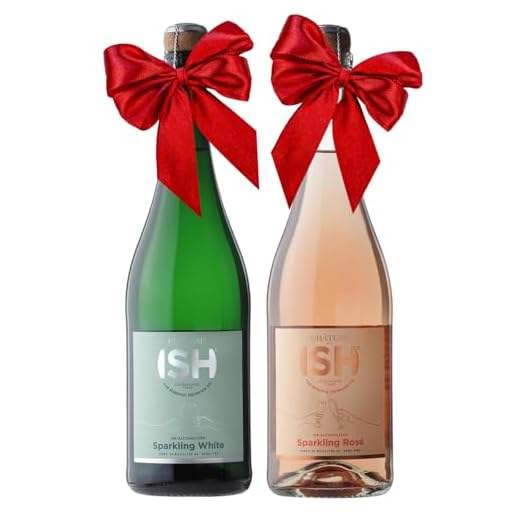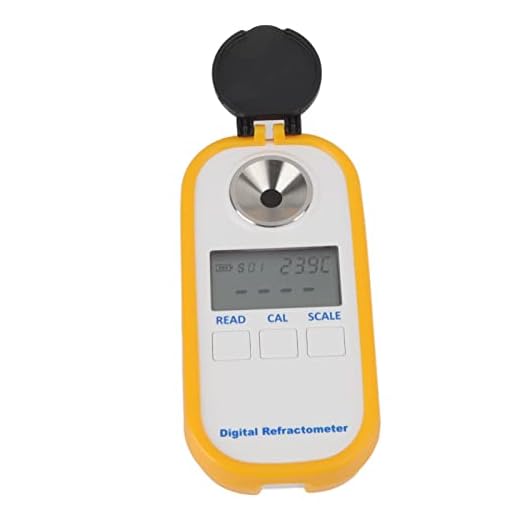



Approximately 200 to 250 units of energy can be found in a standard serving of this delightful pink beverage. While the exact number fluctuates based on the specific brand and style, opting for dry varieties generally results in a lower count compared to sweeter options.
For those who appreciate moderate consumption, be mindful that these figures can accumulate quickly, especially during social gatherings. It’s wise to consider your overall daily intake while enjoying a refreshing sip of rosé, ensuring a balanced approach to your dietary choices.
When selecting a bottle, always check the label for specific nutritional information, as it can provide insights into the content of residual sugars and alcohol, which are key factors influencing the overall energy value. Pairing this drink with lighter fare can enhance your dining experience without overwhelming your caloric goals.
Calories in a Generous Serving of Pink Wine
A typical serving size of approximately 6 ounces in a pink varietal can contain around 150 to 200 units of energy. This can vary based on the specific type and sweetness level of the beverage. Dry versions tend to be on the lower end of the spectrum, while sweeter options may reach higher counts.
When considering your intake, remember that the alcohol content also plays a role. Most pink selections range from 11% to 13.5% alcohol by volume (ABV), with higher ABV often correlating to increased energy levels. If you’re monitoring your consumption, opting for drier styles can be a strategic choice.
Pairing this delightful drink with food can enhance your experience. Consider lighter dishes such as salads or seafood, which can complement the flavors without overwhelming your palate. This not only enriches the tasting experience but helps balance your overall energy intake during meals.
Lastly, enjoying this drink in moderation aligns with many dietary guidelines. If you’re looking to maintain a healthy lifestyle, being aware of your choices can make a significant difference. Cheers to responsible enjoyment!
Understanding Serving Sizes for Rose Wine
For optimal enjoyment, a typical serving of this pink beverage is about 5 ounces. This portion allows for a balanced experience of flavors and aromas, making it easier to appreciate the nuances of the drink.
When considering portions, it’s crucial to recognize that not all vessels are created equal. A wider rim encourages aeration, enhancing the bouquet, while a narrower one can concentrate the aromas. Pay attention to the glass shape you choose, as it can influence your tasting experience significantly.
Measuring accurately can prevent unintentional overindulgence. Using a standard measuring cup or a jigger can help maintain consistent serving sizes, especially during gatherings. Remember, moderation is key in savoring the experience without compromising your health.
Understanding the context of serving sizes is also essential. If you’re pairing this drink with food, consider the meal’s richness and the occasion. Lighter dishes might pair well with smaller servings, while a hearty meal could warrant a slightly larger portion.
Lastly, always consider the environment and setting. Enjoying this delightful beverage in a relaxed atmosphere can enhance your overall experience, making the serving size feel just right. Cheers to making informed choices!
Caloric Content of Different Types of Rose Wine
When considering options, a standard serving of dry pink beverages typically contains about 120 to 130 units of energy. Conversely, sweeter variants can range from 150 to 200 units. It’s crucial to examine labels or consult resources to make informed choices based on sweetness levels.
Factors Influencing Energy Content
The sugar content directly affects the energy tally. For instance, a fruity selection with higher residual sugar will naturally surpass a drier counterpart in energy. Additionally, the alcohol concentration plays a significant role; higher alcohol often correlates with increased energy values. Keep an eye on the ABV (alcohol by volume) percentages, as they can provide insight into the potential energy content.
Understanding Different Styles
Various methods of production lead to distinct styles. Traditional methods may yield different energy profiles compared to those using modern techniques. For example, sparkling versions often contain less sugar, which may result in lower energy counts compared to still varieties. It’s beneficial to explore various regions and their unique approaches, as these factors also contribute to the final energy numbers.
Factors Influencing Calorie Count in Rosé
The varietal of grapes used significantly alters the energy content of your beverage. Lighter grapes typically yield a drier product, resulting in fewer sugars and lower energy levels. Conversely, sweeter varietals can lead to a higher sugar content, directly impacting the overall caloric value.
Fermentation techniques also play a critical role. Extended fermentation often transforms more sugars into alcohol, which can balance the sweetness and potentially reduce energy density. On the other hand, if fermentation is halted early, residual sugars remain, increasing the caloric load.
Alcohol content is a primary factor; higher alcohol percentages correlate with elevated energy levels. A drink with 14% alcohol will generally have more calories than one with 11%, due to the additional alcohol contributing to the total energy content.
The serving size cannot be overlooked. While I often recommend standard portions, pouring a heavier measure will undoubtedly escalate the energy intake. Keeping an eye on your pour can help manage consumption effectively.
Finally, additives like flavorings or sweeteners can introduce extra energy. Some producers enhance their beverages with additional sugars or flavor compounds, which can significantly increase the total caloric count. Always check labels or inquire with the server if you’re monitoring your intake.
Comparing Rosé Wine to Other Alcoholic Beverages
When evaluating the energy contribution of various libations, rosé stands out with a moderate profile. In comparison to spirits, which often have a higher energy density due to their higher alcohol content, rosé typically offers a lighter option. For instance, a standard serving of vodka can contain around 96 calories per 1.5 ounces, while the same volume of rosé may contain approximately 120-130 energy units. This makes the pink drink a more calorie-conscious choice.
Looking at beer, the scenario changes slightly. A regular lager or ale averages about 150 calories per 12-ounce serving, which is significantly higher than a comparable serving of rosé. This makes the fruity beverage a favorable option for those monitoring their intake while still enjoying a social drink.
Here’s a clear comparison:
- Spirits (1.5 oz): ~96 calories (vodka)
- Regular Beer (12 oz): ~150 calories
- Rosé (5 oz): ~120-130 calories
On the other side, craft beers or flavored cocktails can escalate in energy content, sometimes reaching 300-400 units per serving. This makes rosé a balanced alternative, especially for those who enjoy wine culture and its diverse flavor profiles without the heavy energy load associated with many mixed drinks.
In terms of wine classifications, red and white wines often vary in their energy contributions as well. Generally, sweeter whites and some dessert wines can surpass rosé in energy, while dry reds tend to be somewhat comparable. This spectrum illustrates the versatility of rosé as an option for casual and formal occasions alike.
To summarize, when weighing options for a pleasurable drink, rosé provides a delightful balance of taste and moderate energy, making it a wise choice for social gatherings or quiet evenings alike.
Understanding Alcohol by Volume (ABV) and Its Impact on Calories
ABV, or Alcohol by Volume, significantly influences the energy content of beverages. Each percentage point of ABV contributes to the overall caloric density. For example, a drink with 12% ABV typically contains more energy than one with 10% ABV due to the higher alcohol content. This is critical for anyone monitoring their intake.
It’s essential to consider that higher ABV often means a richer flavor profile and a more robust experience, but it also leads to a greater caloric impact. For instance, a standard serving of a 12% ABV drink can have approximately 100 to 120 units of energy, while a 10% ABV version may range from 80 to 100 units. Thus, the choice of alcohol percentage directly correlates with the energy consumed.
To illustrate this further, I’ve compiled a table comparing various ABV levels and their typical caloric contributions:
| ABV Level (%) | Estimated Energy Content (kcal) |
|---|---|
| 8% | 70-90 |
| 10% | 80-100 |
| 12% | 100-120 |
| 14% | 120-140 |
When selecting a beverage, it’s vital to pay attention to the ABV. If you’re aiming to enjoy a lighter option, consider wines with lower alcohol percentages. This approach not only reduces caloric intake but can also enhance the overall tasting experience, allowing for more nuanced flavors to shine through.
In summary, understanding ABV is key for anyone looking to manage their dietary choices while enjoying alcoholic beverages. An informed selection can ensure that you enjoy the experience without overindulging.
Tips for Enjoying Rosé While Managing Caloric Intake
Opt for smaller servings to better control your intake. Pouring a modest amount allows you to appreciate the flavors without overindulging. Consider using a measuring cup to ensure consistency.
Choose Quality Over Quantity
Selecting a high-quality option can enhance your experience, allowing you to savor each sip. A well-crafted variety often has more complexity, making it satisfying even in smaller amounts.
Pair Wisely
Accompanying your drink with lighter fare can balance your overall intake. Fresh salads, seafood, or grilled vegetables complement the flavors beautifully and keep your meal light.
Stay mindful of your social settings. Enjoying a glass with friends can lead to casual overpouring. If you’re at a gathering, consider alternating sips of your drink with water to maintain hydration and reduce consumption.
Finally, if you’re interested in another engaging hobby, check out this guide on how to cycle a new fish tank. It’s a fantastic way to explore new interests alongside your appreciation for wine.









